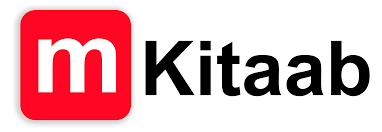Culture is the mirror of human society. Every society has a unique culture of its own which is celebrated by generation by generation of that community. In India, people of different states celebrate various festivals and plays on various occasions. Just like that Bihu Festival is the most prominent festival celebrated with fun and abundance by the people of Assam.
The major festivals and plays of any state can be classified into agricultural festivals, religious festivals, and folk festivals. These festivals are created for the fulfillment of human needs and yearning for social interaction as well as experience gained through the thousands of generations.
For the people of Assam Bihu is not just an important festival, it is a time for celebrating their livelihood, and cultural traditions simultaneously.
The People of Assam celebrate 3 different Bihu festivals – Rangali Bihu or Bohag Bihu, Kangali Bihu or Kati Bihu, and Magh Bihu or Bhogali Bihu.
In this article, we will explore the history, significance, and traditions of the Bihu dance and festivals. We will also look at the different types of Bihu dance, their costumes, and the cultural significance of the festival.

History of Bihu Festival
There are different views and beliefs regarding the origin of the name Bihu. The history of this festival is associated with various myths and legends, including the story of Bordoisila and the creation of the dhol. While these stories may not be based on historical facts, they are an important part of the cultural identity of the people of Assam.
Many scholars say that The word Bihu is derived from the language of Dimassa, Kacharis which is the agricultural community of Assam, Since ages the world was originally bishu, which meant to ask for prosperity from the tribal god. Bihu is the distorted version of Bishu. Several tribal communities like Missings, Deuris, and Morans also perform the Bihu in their distinctive styles but the inner meaning is the same.
Read Also : Best Indian History Books of All Time: Top 8
The story of Bordoisila is one of the most popular myths regarding Bihu, who is believed to be the daughter of Assam. Bordoisila visits her mother’s home once a year during the Bihu festival, which marks the beginning of springtime. She is considered a female spirit and is associated with strong gales that occur during this period. The word Bordoisila is derived from the Bodo language, where Bordoi means “storm,” and Sikhla means “girl.”
According to Hindu mythology, the Earth was created from the pores of Brahma’s hair. During the Kali-yuga, which is the current era in Hindu mythology, musical instruments from heaven were brought down to Earth. One such instrument was the dhol, which was created by Mahadeva of Kailasha. The hollow wooden body of the dhol is traditionally made from the trunk of the Cham tree.
The story goes that Krishna gave the seed of the Cham tree to Narada, who then sowed it on Earth. When the tree grew, Biswakarma cut it down, and carpenter Sukmal shaped it into a dhol.
These stories are popular folk tales that are orally transmitted from one generation to the next. While they are imaginary and unrealistic, they form an important part of the cultural heritage of the people of Assam.
Although the origin of the Bihu dance is unknown. The first official record of it is said to be when the Ahom king Rudra Singha invited Bihu dancers to perform at the Ranghar fields in about 1694 for the Rongali Bihu.
Read Also: Assam – Overview, Geography, Culture, Districts and Symbols
Bohag Bihu or Rangali Bihu:
The Bihu festival is celebrated in mid-April or on the Sankranti of two Assamese months chot and Bahag. This Bihu festival is celebrated for seven days. The seven days are known as Chot Bihu, Rati Bihu, Goru Bihu, Manuh Bihu, Kutum Bihu, Mela Bihu, and Chera Bihu.
The Bohag Bihu festival commences with the Garu Bihu, during which cattle are worshipped in accordance with various rituals. on the day of Manuh Bihu, people greet each other and present their relatives with Gamosa and greet one another. it is followed by Gosain Bihu. The music and dance element of the festival is the main attraction of Bohag Bihu.

The bihu is a group dance in which males and females dance together but maintain separate gender roles. The festival is categorized into three types of performances: Husori, which is performed by male dancers; Gabharu Bihu, which is performed by female dancers; and Deka Gabharu Bihu, in which both male and female dancers participate.
Previously, all of these performances took place in agricultural fields, but nowadays, they are mostly observed and performed on a proscenium stage in the form of a large community spectacle, which also includes various competitions.
Magh Bihu:
Magh Bihu festival is celebrated in mid-January or on the Sankranti of the two Assamese months of Puh and Magh. This festival has been traditionally observed at the completion of the harvest season. During this Bihu festival, a variety of food and snakes like Pitha (a dish made of rice powder, wheat flour, coconut, sesame, and jaggery), Ladu, Doi sira are prepared, which is why this festival is also referred to as Bhogali Bihu.
It starts from Sankranti day and the eve of Bihu is called Uruka. which has special importance in the community of Assam. This Bihu is celebrated after the successful completion of the agricultural cycle and fills the community at large with a sense of joy and fulfillment. While all tribes of Assam celebrate this bihu under different names as Nepali community celebrates it as Maghe Sankranti.
Kati Bihu or kangali bihu:
Kati Bihu festival is celebrated in mid-October or on the Sankranti of two Assamese months of Ahin and Kati. this Bihu is celebrated in the tuff time for farmers during the mid-season of the agricultural cycle. for this reason, Kati Bihu is also known as Kangali Bihu. the farmers pray to their god for the good production of their crops by earthen lamps lit under the Tulsi plants and Naam or devotional songs are sung. the bharal or grain house is also lit with earthen lamps.

Read Also: APSC Examination – Syllabus, Eligibility with 7 Powerful Life-Changing Tips
Conclusion:
The bihu festival is a colorful and vibrant festival that celebrates the arrival of the spring season and the agricultural practices of the region. It is an opportunity for people to come together and celebrate their cultural heritage through traditional dance, music, and food.
Bihu dance is an integral part of the festival, and it is characterized by energetic movements, fast-paced footwork, and lively music. The costumes for the Bihu dance are designed to reflect the cultural heritage of Assam and are an important aspect of the festival.
Overall, the Bihu festival is a celebration of the rich cultural heritage of Assam, and it is an opportunity for people to come together and celebrate their traditions and customs.




